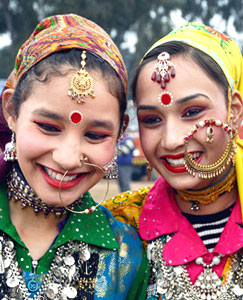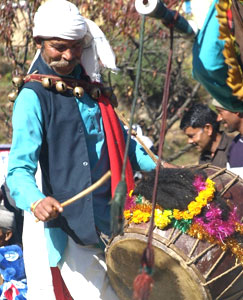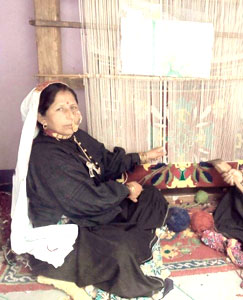Description
The culture of a place depends upon its inhabitants, environment and its heritage. Uttarakhand has all the things in abundance. In fact, it has every thing that any tourist could want. The most significant donor for giving mass appeal to tourism in Uttaranchal is the state’s rich culture, an excellent intermingling of exoticism as well as the way of life. Frequently thought-out to be the belt of Hindu culture, the Uttaranchal’s culture is beyond doubt one of the most vital tourist attractions of Uttaranchal.
The highlights of the Uttaranchali culture should be its history, people, religion and dances. All of them are a beautiful amalgamation of different influences from all the races and dynasties it has been ruled by. Its history is chequered in comparison to the arts culture but still interesting enough to hold a person’s consideration. Its dances are connected to life and human existence and exhibit myriad human emotions. Any trip to this tranquil will be incomplete unless you explore the wonderful culture and lifestyle of the local people.
Dances
Majestic Himalayan Mountains of Uttarakhand have an array of legends and activities attached to them. The state of Uttaranchal has a rich tradition of performing arts and especially dances. Nearly all of the performing arts are tremendously popular in the Garhwal region of the state. In the Kumaon region, however, people are fond of music, folk dance, and songs accompanied by local musical instruments like Murli, Bina, and Hurka.
Bhotiya Dance
The Bhotiya Dance is performed by the Bhotias tribe and is connected with death ceremonies. It is believed by the tribal people that the soul of the dead person resides in the body of a goat or sheep and by dancing this way the soul can be liberated for their next birth.
Jagars - Folk Dances of Kumaon and Garhwal
Jaggar falls in the category of ghost and spiritual worship, in the form of a folk song or at times combined with dances. Sometimes, Jaggar may also be in the form of Puja folk songs and are sung in .honour of the various gods and goddesses.
Chancheri
This is a group dance of Danpur Patti region of Bageshwar District in Kumaon. Both men and women dance in a semi-circular formation with gradually increasing pace putting across unbridled joy.
Barada Nati
The Barada Nati folk dance is a popular dance of the Jaunsar Bhawar area of Chakrata Tehsil in Dehradun district. The folk dance is performed on the eve of some religious festivals or on the occasion of some social functions. Both boys and girls take part in the dance dressed in colourful traditional costumes.
Choliya Dance - Folk Dances of Kumaon
Dating back to over a thousand years, the Chholiya Dance has its origins in the warring Khasiya Kingdom of Khasdesh, when marriages were performed at the point of the swords. They were united by the Chand kings who arrived' on the scene in the 10th century. In Nepal, the word Khasa is still asynonym for Kashatrya, and in Khasdesh, too, they took on the customs of the Rajputs, who were themselves honorary Kashatryas. Keeping the old tradition alive, the Rajputs dance this at their weddings as a part of the marriage procession itself, led by the male dancers who go on dancing till they reach the bride's house. Performed by the Rajputs with sword and shield in pairs, the drummers are usually Harijans called Dholies, while the Turi and Ransing are played by Bairagis, Jogis or Gosains. The Turi and Ransing are typical Kumaon instruments. Perfectly synchronized, and marked with jumps and turns of the body, the dancers show several sword-fighting feats. Attired in the material costumes of ancient warriors, the flashing swords and shields, along with the war-like music, huge red flag with various animal symbols stuck on it conveys fear, joy, awe and wonder, through eyes, and shoulders, creating at the same time, the impression of group advancing for an attack.
Chhapeli
Chhapeli dance is performed by couples with the female carrying a mirror in her left hand and a colored handkerchief in the other. The male plays a Hudukka on his left shoulder accompanied by others playing the Hurka, Manjira and Flute. The dance is a duet that outlines the joys of romance. The woman partner (sometimes also a young boy) dances with a smile and elegant waist movements, either in admiration of her beauty and charm or mocking her ways of expressing love.






Booking Form